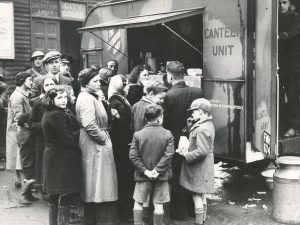The American public has given hundreds of millions of dollars to agencies that promised to deliver those funds to victims and families of those killed during the September 11 attacks. One agency alone has raised more than half a billion dollars; others have raised significant amounts.
Now, the public–and the government–is asking for accountability on how the money has been distributed.
Lt. Colonel Tom Jones, national public relations secretary, recently gave public testimony before the House Subcommittee on Oversight for the Committee on Ways and Means. The purpose of his testimony was to provide information on the amount of money The Salvation Army has received for relief work for the September 11 tragedy, how much of that money has been spent, and what it has been spent on. He also explained how the Army would utilize the balance of the funds.
“The Salvation Army has received $60,484,323 in unsolicited contributions from the American public,” Jones told the committee. “These funds have all been designated for disaster relief in either New York City, the greater Washington, DC area or Western Pennsylvania. It is our standing policy that all designated funds must be utilized fully as intended by the donor and as a result, the full amount of these funds will be collected from across the United States and channeled appropriately to the three primary disaster sites.”
Of the $60.4 million in contributions received, $8.5 million has been spent on immediate needs. A projected budget for the balance of this year through the year 2003 amounts to an additional $53.7 million in direct assistance. “It is our intent that 100% of all designated funds contributed will be directed to the community based command centers of New York City, New Jersey, Washington DC, and Western Pennsylvania for a community led response,” Jones said. “We envision that 20% of these funds will be spent on rescue and clean-up support at the disaster sites and the remaining 80% will be spent on direct financial aid to impacted families.”
A financial and service report provided by Jones (see below) documented the Army’s delivery of service to date, as well as projection of service through the year 2003.
Much of the Army’s disaster response is focused upon displaced and unemployed families who have been described as “collateral victims.” “We will continue to assist those who are laboring daily at ground zero and we are committed to staying there as long as the City of New York, FEMA and the Medical Examiner’s Office need us,” he said. “We will not depart until the job is done. But, our primary role now appears to be meeting the immediate financial needs of financially damaged families–the airlines’ employees, hotel employees, small business employees, and those of numerous sectors–who have lost their jobs and means of income.”
Jones noted that The Salvation Army does not operate nor maintain a full-time national disaster response team or administrative staff. It has one Salvation Army officer designated as the national disaster services coordinator, who represents the Army in a coordinating capacity with FEMA, the FAA and other disaster related non-profit organizations. Likewise, there is no national fundraising program designated specifically to disaster response. Whenever disaster strikes, the Army responds. “We are entirely community based in that response and we remain community based in our fundraising initiatives. Local Salvation Army personnel take command and provide leadership when disaster strikes and when the public responds.”











